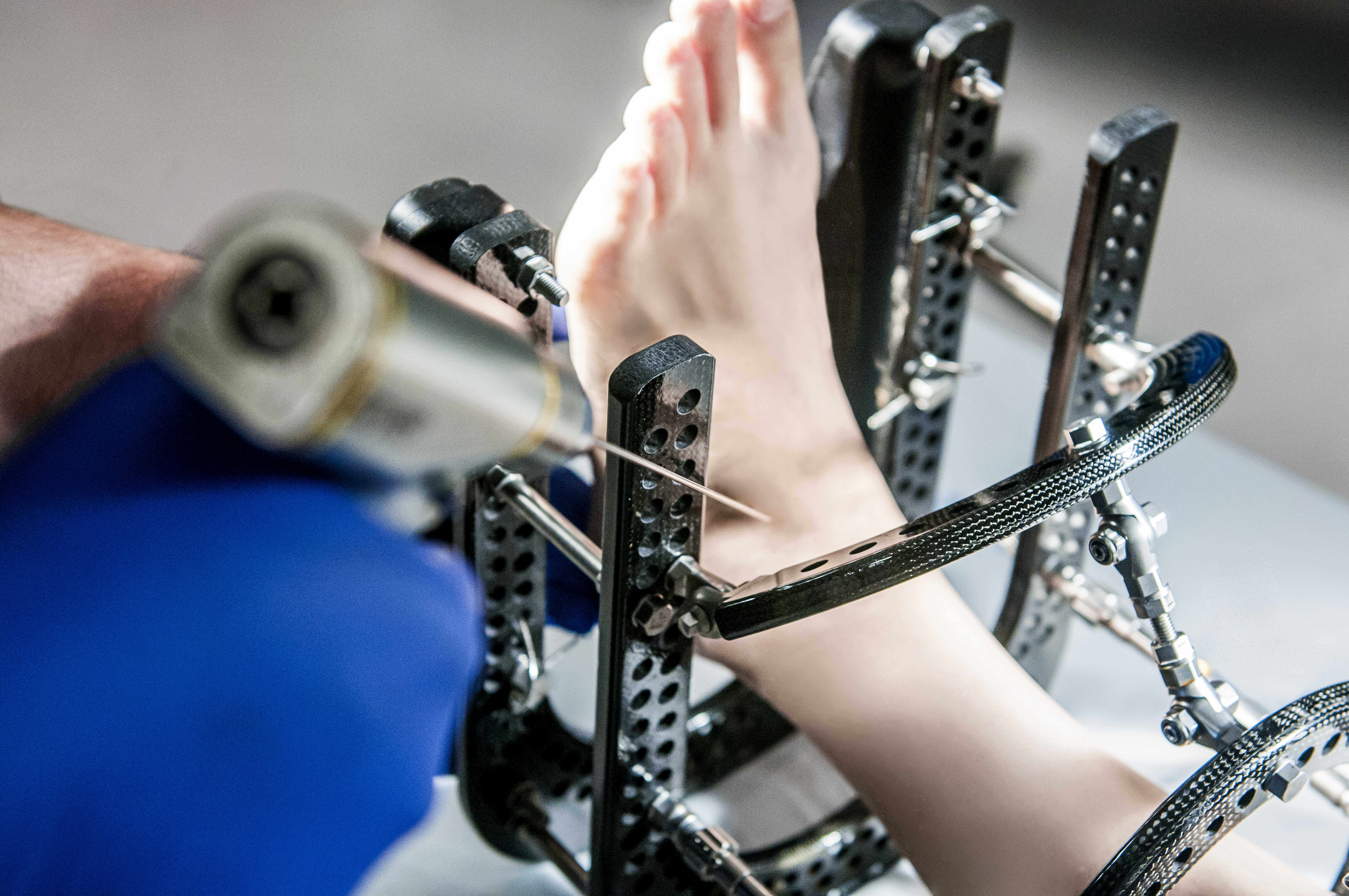Surgery for bunionettes
For many people with tailor’s bunions, surgery is an appropriate option when conservative treatment methods have failed to provided adequate pain relief. Tailor’s bunion surgery—generally referred to as a tailor’s bunionectomy—is designed to remove the “bump” of the bone, correct the changes in the bony structure of the foot, and correct soft tissue changes that also have occurred. The goal of tailor’s bunion surgery is to reduce pain, improve function and decrease deformity to enable the patient to resume normal activities. Different types of surgical procedures are available to treat this condition. In selecting the procedure, your surgeon has taken into consideration the extent of your deformity based on x-ray findings, your age, your activity level, and other factors. Two common types of procedures, which may be modified by your surgeon, are described below.
Exostectomy:
After making an incision over the joint of the little toe (fifth metatarsal phalangeal joint) to gain access to the joint, the surgeon:
- Inspects the joint and surrounding soft
- Removes, if present, a painful fluid-filled sac (bursa) that may lie on top of the “bump”
- Removes the bony prominence of the fifth metatarsal
- Closes the incision with stitches and applies a sterile bandage
Osteotomy:
In addition to the procedures described above, it is sometimes necessary for the surgeon to perform an osteotomy. If so, the surgeon then:
- Makes a cut in the bone of the fifth metatarsal and realigns the bone
- Inserts some type of fixation hardware, typically screws or pins, to secure the realigned bone
- Closes the incision with stitches and applies a sterile bandage
Recovery:
Recovery from these procedures generally take 6-12 weeks. During a portion of this period, weight bearing on the operative foot may not be permitted.



